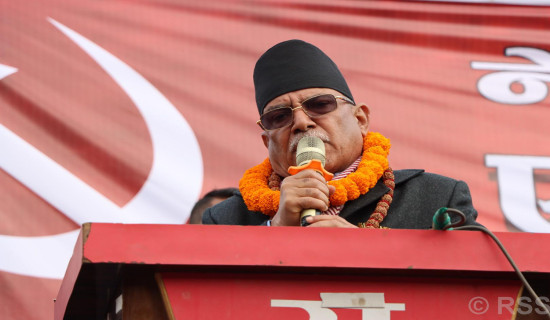- Friday, 2 January 2026
Women In Hydropower Sector
Nepal is one of the richest countries in water resources where over 6,000 rivers and rivulets run across the country. Steep topography of the country offers high possibilities for hydropower generation. Out of the total feasible generation capacity of around 83,000 megawatts, around 42,000 megawatts has been considered economically feasible. Hydropower plays a predominant role in Nepal’s electricity system as well as its economy. The Nepal Electricity Authority (NEA), a state-owned company, had sole authority for production, transmission and distribution of electricity in Nepal before 1912.
With the introduction of the Electricity Act 1992 and the Hydropower Policy 2001, hydropower licenses were distributed and power purchase agreement got signed with private hydropower investors. After the entry of the private sector, the power generation activities got a significant boost. As per the 2021 World Bank study, about 90 per cent of the country’s population has access to electricity, a remarkable achievement. The electricity production has increased with every passing year, and now, it has started exporting energy to neighbouring India.
Women’s participation
The total population of Nepal on Census Day (November 25, 2021) was 29,164,578. Of this, the males population was 14,253,551 (48.87 per cent) and that of females, 14,911,027 (51.13). The sex ratio was 95.59 males per 100 females. According to the detailed census report, the literacy rate of the population aged five years and above was 76.3 per cent, the male literacy rate was 83.6 per cent and female literacy 69.4 per cent. Women’s involvement in economic opportunities are largely limited within domestic affairs and not accounted in Gross Domestic Product calculation of a nation. The active participation of women in project design and its development process has been a critical issue. Women’s everyday life is associated with protection and use of natural resources.
Since the large population of men are in foreign employment opportunities, women are carrying responsibilities of home, elders, children and family occupation like farming, poultry etc. Women’s participation and their engagement in hydropower project are critical components for its successful completion. Hydropower Environment Assessment Manual 2018 ensures to acquire the gender disintegration data during the Environment Impact Assessment (EIA). It focuses on including gender-related impacts such as employment, marginalisation, SES/SH, impact due to influx of migrant workers, crime, trafficking, and loss of livelihood opportunities. Environment Protection Act 2076 and its Regulation 2077 has provisioned for public hearing and notification in national newspaper in the process of impact assessment.
However, it is silent on inclusive participation and mandatory presence of women’s participation in these consultations. In the case of the projects financed by international financing institutions (IFIs), due to their mandatory policy for inclusive consultation, some developers are trying to get to the minimum figure required. In the case of the project promoted by private developers and NEA, the participation of women and vulnerable communities is significantly ignored.
Expansion of electricity supply will bring about considerable positive changes in the communities of both men and women. It can bring positive economic changes through better job opportunities, effective health services, and access to education. During the hydropower infrastructure development, women can benefit from direct employment opportunities as well as by operating small business. In post-construction phase, however, there are a lot of job opportunities, which can uplift status of women alongside their day-to-day life. However, women are deprived of opportunities during the time of power generation, transmission and distribution. The existing socio-cultural dynamics of the communities and power relations in households impede women’s active participation in planning and development of power generation projects.
Barriers
Illiteracy is considered one of the major constraints that hinder women to participate in public meetings. Men are two step head of women because they receive more exposure and opportunities in education and participation. Difficult topography is another factor that keeps women from participating in consultations and decision making. Due to the difficult topography, there is a tendency of organising consultation meeting in market centres and accessible locations. In the case of hydropower project, such centres are generally far from project-affected communities. Public hearings and consultation meetings are generally conducted in the market centres and the easy locations. This has posed barriers for women and least privileged people to travel and attend such programmes.
Existing social norms, household responsibilities, mobility and social acceptances are another factors creating hindrance in women’s participation in public meetings. Women are discouraged to participate community meetings. Generally, a man is considered a household head and land titles are registered in their names. By virtue of being a household head, a man is considered to be power person in decision making. Patriarchal social structure and household lead has placed man as supreme human in the family. So he is free to make family any decisions on matters concerning family and properties. Men are also ahead in participating in extra-household and community affairs. Considering the significant and two-fold impact on women and vulnerable population in infrastructure development, nation is getting late to prepare a policy that ensures women’s participation in hydropower development.
(The author is a chartered accountant by profession.)

















